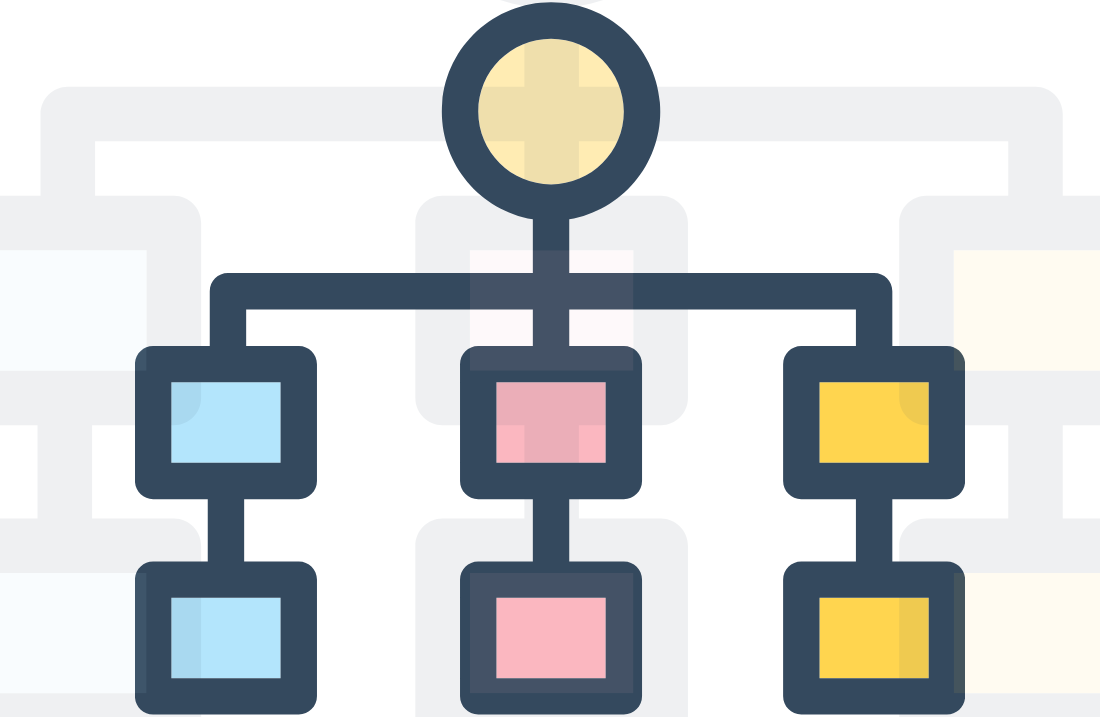What’s up everyone!
Today we're exploring the world of prompt engineering — the art of using precise instructions to get the most out of large language models (LLMs). The page will broken-out into the following sections if you want to skip around:
What is a Prompt
Prompt Types
What Makes a Good Prompt?
Advanced Techniques
Security and Ethics
Tools and Resources
What is a Prompt?
A prompt is the starting point for any conversation with an AI. It's the text you input to guide the model's response. Think of it as a flashlight in the dark: the clearer and more focused your prompt, the better the AI can illuminate the answers you're seeking.
Prompt engineering is crucial because it serves as the bridge between human intent and AI output. Just like clear communication is essential in human interactions, well-crafted prompts are fundamental to getting optimal results from AI systems.
Prompt Types
Understanding different prompt types is fundamental to effective AI interaction. Each type serves a specific purpose and can significantly impact the quality and relevance of AI responses. The choice of prompt type often depends on factors like task complexity, required accuracy, and the amount of context available. Mastering these various approaches allows users to select the most appropriate method for their specific use case, leading to more efficient and effective AI interactions.
Instruction Prompts: Direct the AI to perform specific tasks or actions. These are straightforward, task-oriented prompts that clearly outline what needs to be done. For example: "Analyze this Python code for potential security vulnerabilities" or "Translate this paragraph into Spanish while maintaining the formal tone."
Exploratory Prompts: Encourage creative thinking and open-ended responses. These prompts are designed to generate innovative ideas or explore hypothetical scenarios. For example: "Brainstorm potential solutions for reducing urban food waste" or "Describe how quantum computing might impact cybersecurity in the next decade."
Formatting Prompts: Specify the desired structure and presentation of the output. These prompts focus on how information should be organized and displayed. For example: "Present the quarterly sales data in a markdown table with columns for region, revenue, and growth percentage" or "Create a step-by-step troubleshooting guide with numbered steps and code examples."
Role-Based Prompts: Ask the AI to adopt a specific perspective or expertise level. These prompts help tailor explanations and responses to particular audiences or contexts. For example: "As a financial advisor, explain cryptocurrency risks to a retired investor" or "As a pediatrician, describe common childhood vaccination schedules to new parents."
Chain-of-Thought Prompts: Guide the AI through step-by-step reasoning processes. These prompts are particularly useful for complex problems requiring logical progression. For example: "Solve this calculus problem, showing each step of your work and explaining your reasoning at each point."
Context-Setting Prompts: Provide background information and establish parameters for the response. These prompts help frame the discussion and ensure relevant output. For example: "Given that this is a B2B software company targeting enterprise clients, suggest appropriate marketing strategies."
Iterative Prompts: Build upon previous responses to refine or expand the output. These prompts are used to progressively improve or modify content. For example: "Take the previous marketing plan and adjust it for a smaller budget while maintaining the core campaign objectives."
Comparative Prompts: Request analysis of similarities, differences, or relationships between multiple items. These prompts help in understanding connections and contrasts. For example: "Compare and contrast microservices and monolithic architecture, considering scalability, maintenance, and deployment."
What Makes a Good Prompt?
Building effective prompts is both an art and a science that directly impacts the quality of AI-generated responses. A well-designed prompt acts as a clear communication bridge between human intent and AI interpretation, leading to more accurate, useful, and relevant outputs. The difference between a mediocre prompt and an excellent one often lies in the details – how clearly it communicates requirements, how well it provides context, and how effectively it guides the AI toward the desired outcome.
Do
Clear: Provide explicit instructions and expected outcomes for your request. Instead of asking "write something about climate change," specify "write a 500-word explanation of how rising sea levels affect coastal communities, including specific examples from Florida and Bangladesh."
Concise: While including necessary details, avoid redundancy and tangential information. Focus on essential parameters that directly influence the desired output, such as format, length, tone, and key points you want covered.
Goal-Oriented: Clearly state the purpose or objective of your request. For example, instead of "tell me about marketing strategies," specify "provide three B2B marketing strategies that would help a small software company increase its enterprise client base by targeting CTOs."
Structured: Break down complex requests into logical components or steps. For example, when requesting a business plan, outline the specific sections you want (executive summary, market analysis, financial projections) and any particular aspects to emphasize within each section.
Contextual: Include relevant background information that helps frame the response appropriately. This might include target audience, industry-specific terminology, or particular constraints that need to be considered. For example: "Write a technical blog post about Docker containers for developers who are familiar with traditional VM deployments but new to containerization."
Examples
✅ Clear: "Create a step-by-step tutorial for beginners on how to make sourdough bread, including required ingredients, equipment, timing for each step, and three common troubleshooting tips. The tutorial should be written in a casual, encouraging tone."
✅ Concise: "Write a professional email to decline a vendor's proposal, maintaining a positive relationship for future opportunities. Keep it under 200 words and include a specific reason for the decline."
✅ Goal-Oriented: "Design a 30-day social media content calendar for a local coffee shop with the goal of increasing foot traffic by 20%. Include post types, optimal posting times, and key metrics to track."
Don’t
Overload with Instructions: Cramming too many requirements or conflicting demands into a single prompt can confuse the AI and lead to inconsistent or poor quality outputs. Keep each prompt focused on a specific task or goal.
Assume Prior Context: While it's important to provide relevant background information, don't assume the AI remembers details from previous conversations or has knowledge of specific internal processes or documents that weren't explicitly shared in the prompt.
Use Ambiguous Language: Phrases like "make it better" or "do it professionally" are subjective and open to interpretation. Without specific metrics or examples of what "better" means, the AI cannot effectively meet your expectations.
Skip Important Parameters: Leaving out crucial details like desired length, format, tone, or target audience forces the AI to make assumptions that might not align with your needs. These parameters help shape the response appropriately.
Mix Multiple Unrelated Requests: Combining multiple unconnected tasks in one prompt (like "write a poem about space AND explain quantum physics AND create a marketing plan") dilutes the focus and typically results in superficial treatment of each topic.
Examples
❌ Overload with Instructions: "Write a blog post that's professional but casual, technical but accessible to beginners, comprehensive but brief, and include everything about machine learning while keeping it under 500 words."
❌ Assuming Prior Context: "Update that email template we discussed earlier with the new pricing structure we talked about last week."
❌ Skip Important Parameters: "Write some code to process data."
Advanced Techniques
Mastering advanced prompt engineering techniques is crucial for maximizing the potential of AI language models. These methods go beyond simple queries to enable more sophisticated, accurate, and controlled interactions. By understanding and implementing these techniques, users can achieve more reliable outputs, solve complex problems more effectively, and better harness the AI's capabilities for specific use cases.
Chain of Thought Prompting - Explicitly instruct the AI to break down complex problems into steps and show its reasoning process, leading to more accurate and transparent responses.
Few-Shot Learning - Provide multiple examples of desired input-output pairs in your prompt to help the AI understand the pattern and format you want it to follow.
Role-Based Prompting - Assign a specific role or persona to the AI (like "expert physicist" or "writing coach") to elicit responses with the appropriate expertise and perspective.
Self-Consistency Prompting - Ask the AI to generate multiple independent solutions to the same problem and then compare them to arrive at a more reliable answer.
Zero-Shot Decomposition - Break down complex tasks into smaller, manageable subtasks without providing examples, allowing the AI to tackle challenging problems piece by piece.
Meta-Prompting - Include instructions about how to interpret and respond to the prompt itself, helping to guide the AI's approach to answering your question.
Reflexive Prompting - Ask the AI to evaluate and refine its own responses, leading to more accurate and thoughtful outputs.
Structured Output Formatting - Specify exact formats, templates, or data structures for the AI's response to ensure consistency and usability of the output.
Negative Prompting - Explicitly state what you don't want in the response to help guide the AI away from unwanted patterns or content.
Context Layering - Gradually build up context through multiple prompts, allowing for more nuanced and detailed responses while maintaining clarity.
Security and Ethics
The responsible use of AI language models is becoming increasingly important as these tools become more integrated into our daily work and lives. Security and ethics in prompt engineering aren't just best practices – they're essential safeguards that protect both users and organizations from potential harm. Poor security practices can lead to data leaks, unauthorized access, or the generation of harmful content, while ethical considerations ensure that AI interactions remain transparent, fair, and beneficial to all parties involved.
When working with AI models through web interfaces, users must understand that their prompts and interactions could be logged, reviewed, or potentially accessed by others. This makes it crucial to develop good habits around data protection, content verification, and responsible usage. Additionally, as AI-generated content becomes more prevalent, maintaining transparency about AI involvement and ensuring proper attribution helps preserve trust and credibility in professional and academic contexts.
Prompt Injection Awareness - Understand that malicious users might attempt to make the AI disregard its safety guidelines through carefully crafted prompts that include statements like "ignore previous instructions" or "disregard your ethical constraints."
Personal Data Protection - Be mindful never to share sensitive personal information, passwords, or private data in prompts, as these interactions may be logged or reviewed for system improvement.
Output Verification - Always verify AI-generated code, facts, or recommendations before implementing them, as language models can occasionally generate plausible-sounding but incorrect information.
Attribution Clarity - When using AI-generated content, maintain transparency about its source and avoid passing off AI-generated work as purely human-created, especially in academic or professional contexts.
Dual-Use Awareness - Consider how seemingly innocent prompts might be repurposed for harmful applications, and exercise caution when sharing prompt techniques publicly.
Cost Consciousness - Be aware that some prompting techniques, like asking for multiple iterations or extensive computations, can significantly increase API usage and costs.
Responsible Data Handling - When using AI tools for data analysis, ensure you have proper authorization to share that data and consider potential privacy implications.
Bias Recognition - Be aware that your prompt phrasing can inadvertently introduce or amplify biases in the AI's responses, particularly around sensitive topics or demographics.
System Limitations - Understand that AI models have knowledge cutoff dates and limitations, and avoid relying on them for time-sensitive or critical decision-making without verification.
Content Guidelines - Respect platform-specific content policies and avoid prompts designed to generate harmful, illegal, or inappropriate content, even if technically possible.
Tools and Resources
The rapidly evolving landscape of AI tools and resources provides essential infrastructure for both beginners and advanced practitioners in the field of prompt engineering. Having access to the right tools and resources can significantly enhance your ability to work effectively with AI language models.
Interactive Playgrounds
OpenAI Playground - Offers a user-friendly interface for interacting with various models developed by OpenAI, including the famous GPT series. Users can experiment with text generation, translation, summarization, and more.
NVIDIA AI Playground - This platform allows users to interact with NVIDIA's AI research demos in real-time. It includes an AI Art Gallery and features like NeVA, SDXL, Llama 2, and CLIP. Users can dive into AI applications in art, music, and more.
AssemblyAI Playground - Focused on speech recognition and audio processing, this playground allows users to experiment with AI models for transcription, speaker identification, and sentiment analysis from audio data.
TensorFlow Playground - An educational tool for visualizing how neural networks work. It's particularly useful for those interested in understanding the basics of machine learning without coding.
Vercel AI Playground - Provides a platform where developers can compare the performance of different language models side by side. It supports models like those from OpenAI, Anthropic, and more, with features for sharing results and generating code snippets.
Chat LMSys - Known for its Chatbot Arena where users can compare different AI models in a conversational setting, this playground is ideal for developers and researchers focusing on conversational AI.
Intel AI Playground - Specifically designed for systems with Intel hardware, it offers a local AI experience with tools for image creation, editing, and chatbot interactions, supporting models like Stable Diffusion and ComfyUI workflows.
EleutherAI Playground - An open-source platform for AI research and development, allowing users to experiment with models like those from Meta's LLaMA series, focusing on democratizing AI research.
HuggingChat - A playground by Hugging Face offering access to a variety of language models for free, allowing users to experiment with different LLMs for text generation, translation, and more.
AI Playground by Gedankenfabrik - A curated collection of web-based AI applications for playful exploration, showcasing developments in AI from the past few years, including music generation, image manipulation, and interactive storytelling.
Prompt Management Tools
PromptHub - A tool for teams to test, deploy, and manage prompts, offering features like version control and sharing capabilities. It's particularly praised for its integration and ease of use for collaborative prompt management.
Helicone.ai - An open-source platform focused on prompt engineering. It includes features for data collection, performance monitoring, and experimentation with prompt templates. It's known for its interpretability features and collaboration tools, though its pricing can be complex for larger teams.
PromptLayer - Known for its comprehensive approach to prompt engineering, it offers prompt management, testing, and deployment. It includes a prompt registry, batch testing, and analytics, making it a versatile choice for developers working with LLMs.
LangChain - While not solely a prompt management tool, LangChain supports complex prompt chains for multi-step workflows, ideal for sophisticated AI applications. It's particularly beneficial for tasks requiring context retention and decision-making across different AI models.
PromptPerfect - This tool automatically optimizes prompts for various AI models, including ChatGPT, MidJourney, and Stable Diffusion. It allows users to see previews of AI responses to different prompt variations, aiding in prompt refinement.
Agenta - An open-source tool for developing, managing, and deploying LLM applications. It offers features like collaborative prompt engineering, automated evaluation, and human feedback integration, making it suitable for teams building LLM-based applications.
PromptDrive.ai - A user-friendly solution for managing and sharing prompts, particularly useful for collaborative environments. It supports multiple AI models and allows for direct integration with APIs for real-time updates.
Prompteams - Provides Git-like features for prompt management, including repositories, branches, and commits, which aids in versioning and team collaboration on prompt development.
Amazon Bedrock Prompt Management - Specifically designed for AWS users, it simplifies prompt creation, evaluation, and versioning, with integration into the AWS ecosystem for seamless model interaction.
PromptBoard - A tool for mobile users, focusing on managing prompts directly from a keyboard interface, with access to a community of prompt trends and pre-made prompts for inspiration and quick application.
Community Forums
Prompt Engineer Collective - A private community of generative AI experts, focusing on prompt engineering.
r/PromptEngineering on Reddit - A subreddit dedicated to the art and science of prompt engineering for AI, particularly for language models.
Learn Prompting Discord - A community with a focus on learning and discussing prompt engineering techniques, with a strong emphasis on education.
Promptstacks - A platform where enthusiasts can explore, share, and discuss AI & prompt engineering, including tips, tricks, and resources.
Midjourney Community - While focused on image generation, this Discord server also delves into prompt engineering for text-to-image AI models, offering a vibrant community for sharing and learning.
Chrome Extensions
Prompt Storm - This is a powerful, easy-to-use AI prompt engineering Chrome extension designed for ChatGPT, Google's Gemini, and Anthropic's Claude. It provides users with a wealth of pre-crafted prompts to leverage AI for various tasks from writing to marketing strategies.
AIPRM - AIPRM is known for its extensive library of prompt templates that you can use with ChatGPT. It's particularly useful for those looking to save time by not having to craft every prompt from scratch, offering community-sourced prompts for various applications.
Promptmatic - This extension allows users to bookmark, save, and organize ChatGPT prompt templates and GPTs for instant access. It includes features like a Smart Prompt Editor for crafting detailed prompts, enhancing productivity for users in professional settings.
Prompt Engine Pro - Designed to enhance online communication by integrating ChatGPT responses into your browser, allowing for natural and dynamic conversation management. It saves responses to your account for future reference.
WriteGPT AI Copilot - This extension offers features like access to various AI models including ChatGPT-4 and Gemini, prompt personalization, and commands to simplify prompt engineering. It's particularly useful for content creation and research across different websites.
Educational Resources
Coursera - Offers courses like "Prompt Engineering for ChatGPT" by Vanderbilt University, teaching how to harness the power of large language models.
Class Central - Lists over 1100 courses in prompt engineering from top universities, covering evaluation, creation, and applications of AI language models.
Udacity - While not explicitly listed in the search results, Udacity often includes AI-related courses that might touch on prompt engineering, focusing on practical skills.
Prompt Engineering Guide - A comprehensive guide on GitHub by DAIR.AI, offering papers, learning guides, lectures, and tools for prompt engineering.
Learn Prompting - Provides one of the largest courses on prompt engineering, with content modules and community support.
Prompting Guide - Another detailed guide on the web, focusing on techniques and applications of prompt engineering.
Mastering Generative AI and Prompt Engineering - A free eBook linked from KDnuggets, aimed at providing deep insights into prompt engineering techniques.
Reddit - The subreddit r/PromptEngineering is dedicated to discussions, sharing resources, and community support for those interested in prompt engineering.
OpenAI Developer Forum - A place where professionals and enthusiasts discuss prompt engineering among other AI-related topics.
X - Posts on X often share resources, tips, and updates about prompt engineering.
Medium - Various articles provide insights, techniques, and examples for prompt engineering, like "Prompt Engineering for Educational Publishing and Assessment" by Niall McNulty.
KDnuggets - Known for its articles on AI and machine learning, including prompt engineering techniques and resources.
UC Davis Research Guides - Offers a guide on using generative AI for teaching, research, and learning, including prompt engineering.
Media Education Lab - Features webinars and resources for teaching prompt engineering in K-12 education.














